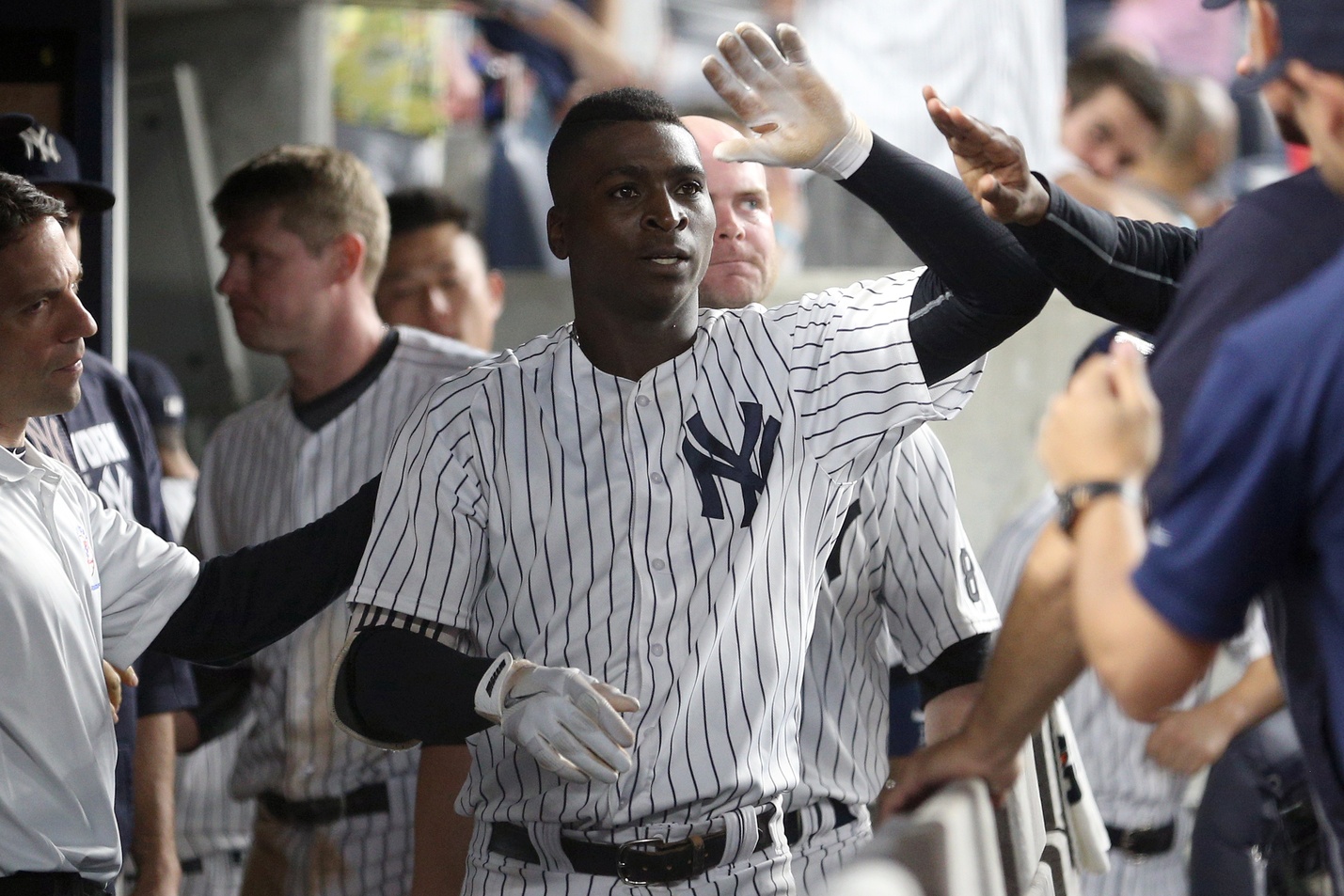It’s no secret that Didi Gregorius has been a bright spot on this team in 2016, emerging with an adequate enough bat to complement his well-regarded defense. WAR is a rather flawed stat that changes depending on what source you cite, but the consensus is that Gregorius has developed into something resembling a three-win player (prorated per year) over the course of his time with the Yankees. That’s a very nice player, mind you, and those types of players tend to get paid about $15-20 million per year on the open market. So I decided to take a look at the interesting trade that brought Gregorius to the Bronx.
ARI trades Didi Gregorius to NYY
NYY trades Shane Greene to DET
DET trades Robbie Ray, Domingo Leyba to ARI
Looking at this trade from a team-by-team perspective of surplus value (or loss), it’s pretty clear that the Yankees came out ahead from this trade. They sold Shane Greene at just the right time, as Greene’s velocity immediately took a dive upon leaving New York. That probably helped explain his K/9 drop from 9.27 to 5.38 and his ERA jump from 3.78 to 6.88. Greene’s velocity has returned this season, but only because he’s made a move to the bullpen. Greene has been a serviceable member of the Tigers’ bullpen this year, but his 2.70 FIP and 3.93 DRA has more to do with an unsustainably low HR/FB rate rather than outstanding underlying skills. Brian Cashman did well in trading a replaceable reliever for four years of an above-league-average starting shortstop.
However, if you’re making fun of the Diamondbacks for foolishly letting go of Gregorius, don’t. As well as the Yankees did by landing Gregorius, the Diamondbacks ended up with the most valuable return in this deal. In exchange for Gregorius, Arizona received left-handed pitcher Robbie Ray and shortstop prospect Domingo Leyba from the Tigers. Ray has turned into an elite strikeout artist in just his second full season, sporting the third-highest K/9 in all of baseball (among qualified SPs) this season. He’s on pace for 228 strikeouts, while his 93.8 mph fastball is the second-highest among all lefty starters. His 3.55 DRA in 2016 indicates a very promising outlook. Now, Ray and Gregorius are very similar in terms of talent, but Gregorius had already burned two years of service time before the trade, while Ray still came with all six years of pre-FA team control. And that doesn’t even take the inclusion Leyba into account, who’s a top 10 prospect in the Diamondbacks organization currently. He’s a 20 year-old in Double-A that has slashed .307/.360/.439 this season and can play a legitimate middle infield. Swapping Gregorius for Ray and Leyba, at least at this moment in time, looks like it created plenty of surplus value for the Diamondbacks.
If you’re making fun of the Tigers for foolishly letting go of Ray and Leyba, well, go ahead. It’s unfair that we’re criticizing this deal with 20/20 hindsight, and no one was really making fun of them at the time of the trade. Greene was a controllable potential starting pitcher that could have easily turned into current-Robbie Ray, while Ray was seen as a future potential reliever that could have easily turned into current-Shane Greene. Leyba is a nice piece, but he is not and was never considered a top-100 prospect across the minors. But as it stands right now, the Tigers were the clear losers of this deal.
It’s time to look at this back from a Yankees perspective, since, you know, this is a Yankees site. The Diamondbacks may have received the best return in the trade, but the Yankees probably received the most surplus. The difference between Greene and Gregorius is much greater than the difference between Gregorius and Ray/Leyba. On a separate note, basic logic indicates that the Tigers would have been willing to deal Ray and Leyba directly to the Yankees for Shane Greene. But should the Yankees have done that?
The Yankees needed a shortstop to replace Derek Jeter, and the front office decided that Gregorius was that guy. Using MLB Trade Rumors’ Top 50 2014-15 Free Agents, at the time of the offseason, the five shortstops (or arguable shortstops) in the top 50 were as follows: Hanley Ramirez, Jed Lowrie, Asdrubal Cabrera, Stephen Drew, and Jung Ho Kang. Seeing as Hanley Ramirez was one of the worst defensive left fielders in baseball history for the Red Sox and was relegated to first base, the lowest position on the defensive spectrum, it’s pretty safe to say that Hanley’s body would not have been suited for another season at shortstop, and his actual 2015 performance at the plate was pretty bad as well. Jed Lowrie has been his usual self in the last two years—decent, but often hurt. While it’s possible that he may not have suffered a particular injury (or injuries) in a different environment, Lowrie probably would not have been better than Gregorius has been. Cabrera is the one guy on this list that has performed relatively similarly to Gregorius. The Yankees did end up signing Drew, putting him at second base, where he struggled to a pitiful .201/.271/.381 line. Signing Jung Ho Kang would’ve been an amazing coup.
Had the Yankees not traded for Gregorius, no one really knows what they would’ve done as an alternative. If we assume they would’ve signed one of these five to be their shortstop instead, one of the five would’ve been comparable, and one would’ve been much better, while three of them would’ve ranged from worse to disaster. And it isn’t like the Yankees have been desperate for a pitcher like Ray over the last couple years.
So not only did the Yankees improve the most out of the three teams in this trade, but they also received the package that best fit their roster needs.
Photo: Brad Penner/USA Today Sports
